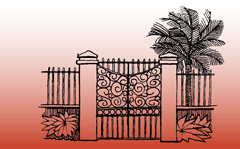Abstract
The existence of multiple versions of scholarly content (from author websites, institutional repositories, government archives, subject-specific digital libraries, aggregator collections and publisher websites) make it difficult for users to locate the most recent version of a document or to ascertain if the document has had any updates or even been retracted. This session describes tools for end users to evaluate the content they come across to make sure they are citing the most authoritative version of the content available. The reader will learn about the CrossMark version of record service and the importance of educating users about how to locate current information.
End User Tools for Evaluating Scholarly Content
The existence of multiple versions of scholarly content (from author websites, institutional repositories, government archives, subject-specific digital libraries, aggregator collections and publisher websites) make it difficult for users to locate the most recent version of a document or to ascertain if the document has had any updates or even been retracted. This session describes tools for end users to evaluate the content they come across to make sure they are citing the most authoritative version of the content available. The reader will learn about the CrossMark version of record service and the importance of educating users about how to locate current information.
